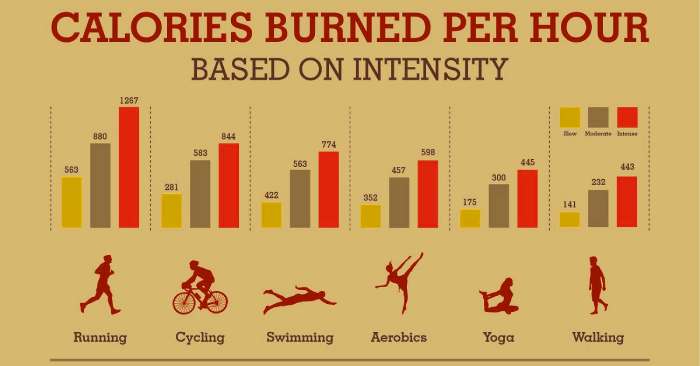Can Calories Burned Running a Mile? Running is a popular form of exercise. It’s said that ‘the more you put in, the more you get out,’ which is certainly true regarding running. Not only can this form of exercise burn a lot of calories, but it also offers countless other benefits.
However, the exact number of calories burned depends on various factors. These factors include your body weight, running pace, and the terrain you’re running on.
To get the most out of your runs and maximize calorie burn, it’s important to focus on proper training techniques. Incorporate interval training, hill sprints, and long runs into your routine to challenge your body and increase calorie expenditure.
Contents
- 1 Types of Running: Differentiating Calories Burned in Various Running Styles
- 1.1 Calories Burned: Calculating Energy Expenditure per Mile
- 1.2 Factors That Affect Calories: Understanding Variables Influencing Burn Rates
- 1.3 Benefits of Running: Beyond Caloric Expenditure
- 1.4 Training Tips: Maximizing Caloric Burn and Overall Fitness through Running
- 1.5 Frequently Asked Questions:
- 1.6 Conclusion:
Types of Running: Differentiating Calories Burned in Various Running Styles
Running is an activity that comes in many forms: from sprints to marathons, you can tailor your runs to your specific goals.
Interval running involves alternating between high and low-intensity runs and can be beneficial for improving speed and endurance.
Endurance running is focused on longer, slower runs and is great for increasing your base endurance level.
Both interval and endurance running are valuable for burning calories, but the number of calories burned depends on how fast and far you run.
No matter what type of running you do, you can easily track your progress and calories burned with a fitness tracker.
Calories Burned: Calculating Energy Expenditure per Mile

You can burn anywhere from 100 to 500 calories per mile when running, depending on your speed and intensity. This can be a great way to improve your heart health and build muscle.
Speed is a major factor; the faster you run, the more calories you burn. Intensity is also important, and interval training can help you burn more calories in less time.
Additionally, the way you run can impact the number of calories burned. For example, running uphill burns more calories than running on a flat surface. Other factors like your weight and metabolism can also affect the number of calories you burn.
Ultimately, the amount of calories burned while running a mile will depend on the individual.
Factors That Affect Calories: Understanding Variables Influencing Burn Rates
Beyond speed and intensity, several factors can impact how many calories you burn when running a mile. These factors include:
- Your metabolic rate: The higher your resting metabolic rate, the more calories you’ll burn.
- Your body weight: The more you weigh, the more energy it takes to run a mile.
- Your age: Generally, older people will burn fewer calories than younger people.
- Your fitness level: The better your physical fitness, the more calories you can burn.
Essentially, the fewer calories you burn running a mile, the less weight you’ll lose.
To maximize your calorie burn, focus on increasing your metabolic rate, body weight, age, and fitness level.
Benefits of Running: Beyond Caloric Expenditure
Besides the calories burned, running can bring various other benefits to your health and well-being. Regular running can help you improve your overall physical and mental health, from stamina building to stress relief.
It can be used as a great way to build endurance and muscle strength and also increase your lung capacity. Additionally, running can help reduce stress and anxiety and improve your mood. It can also help reduce the risk of chronic diseases such as type 2 diabetes, heart disease, and stroke.
Running can also benefit your joints and bones as it improves flexibility and strengthens them.
Running is an excellent way to help improve your overall health and well-being.
Training Tips: Maximizing Caloric Burn and Overall Fitness through Running

Now that you understand the benefits of running, it’s time to start training to burn those calories! Here are some tips to get you started:
- Incorporate stretching exercises into your daily routine. Stretching helps to prevent injury and keeps muscles loose and relaxed.
- Plan out a proper diet for energy and strength. Eating the right foods will give you the fuel you need for a successful workout.
- Get the proper shoes and clothing. Choosing the right shoes and clothing is essential for an enjoyable and effective running experience.
- Set realistic goals. Have a plan and focus on meeting your goals one day at a time.
Remember that consistency is key when it comes to running. With dedication and commitment, you can reach your goals and burn calories.
Frequently Asked Questions:
Setting a running goal and tracking your progress is key! Aim to run 3-5 days a week, starting with short distances and gradually increasing as you get stronger. Set realistic goals and chart your progress to stay motivated.
You’re not alone in wanting to stay motivated to run! Setting achievable goals and positive reinforcement can help. Coincidentally, you can track your progress and celebrate successes along the way. Make it fun and rewarding by setting rewards for yourself when you reach a goal. Good luck!
Before jogging, it’s important to stretch properly. Focus on your hamstrings, quads, calves, and glutes. Ensure you have the right footwear to reduce strain and help with technique.
Fuel your body with balanced meals and snacks to prevent running-related injuries and warm up with dynamic stretching before running. Incorporate these habits into your routine, and you’ll be well on your way to injury-free running!
Track your progress while running by monitoring your pace and distance. Use a fitness tracker or smartphone app to measure your progress, set goals, and stay motivated.
Conclusion:
Running is a great way to get your heart pumping, burn calories, and stay healthy. Whether you’re running a 5K, 10K, half-marathon, or a full marathon, the calories you burn will depend on your weight, speed, and intensity.
With regular training, you can increase your distance and speed, burning more and more calories over time.
Together with a balanced diet and regular exercise, running can help you stay in shape and reach your health and fitness goals.

Hello, I’m Ravindra. Over the years, I’ve immersed myself deeply into the world of fitness and health, transforming both my body and mind. Writing has allowed me to share my journey, insights, and expertise with those just starting out and seasoned fitness enthusiasts alike. Beyond just routines and diets, I believe in inspiring others to adopt a holistic approach to well-being.
